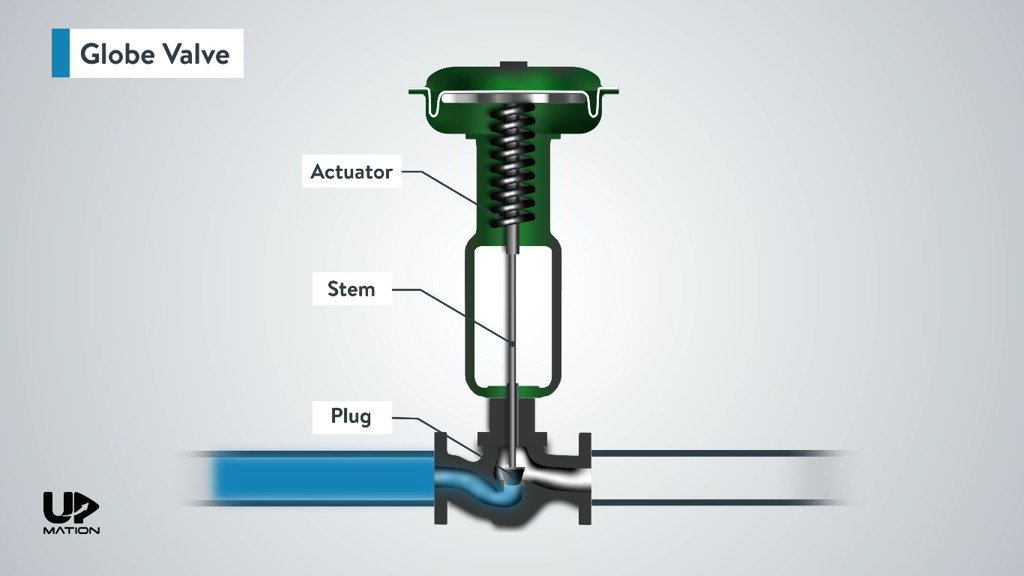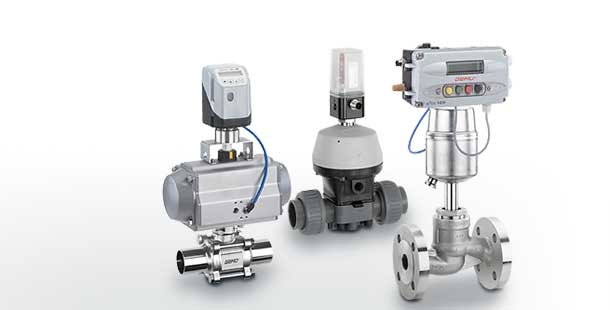Enhancing Functional Effectiveness with Advanced Control Valves
Enhancing Functional Effectiveness with Advanced Control Valves
Blog Article
Achieve Seamless Combination and Control With Top Quality Building Automation Controls
In the realm of modern-day building management, the significance of quality structure automation controls can not be overemphasized. As modern technology continues to breakthrough, the combination and control of numerous systems within a building have actually progressed to be a lot more sophisticated and efficient. The seamless procedure and surveillance of lighting, HVAC, safety, and other building functions have actually come to be vital for improving occupant convenience, power efficiency, and general operational efficiency. The journey in the direction of achieving real combination and control is a diverse one, with factors to consider ranging from system compatibility to cybersecurity. Welcoming top quality building automation controls is not just a matter of convenience however a calculated imperative for organizations aiming to maximize their facilities' efficiency and sustainability.

Advancement of Structure Automation Controls
Throughout the past few years, the advancement of constructing automation controls has considerably transformed the way buildings are managed and run. Developing automation systems primarily focused on basic functions such as regulating air, heating, and ventilation conditioning (HVAC) systems. Nevertheless, as modern technology progressed, these controls have actually come to be much more advanced, enabling for a wider series of building systems to be integrated and taken care of centrally.
The advancement of building automation controls has actually seen a shift towards even more intelligent systems that can adjust to changing conditions in real-time. This flexibility is critical for maximizing energy effectiveness and making certain occupant convenience. Furthermore, modern-day building automation controls now provide functions such as predictive maintenance, remote tracking, and data analytics, allowing center managers to make data-driven decisions to boost structure performance.

Advantages of Quality Assimilation
The development in structure automation controls towards more smart systems has actually highlighted the substantial advantages of top quality integration in maximizing structure operations and boosting overall effectiveness. Quality integration of building automation controls uses a number of crucial benefits. It leads to boosted power efficiency by allowing different systems to work together seamlessly, guaranteeing optimal efficiency and decreasing energy wastefulness. Second of all, top quality assimilation improves owner convenience and efficiency by making it possible for personalized control over ecological settings like air, temperature level, and illumination high quality. This personalization can cause a much more conducive and comfy working or living atmosphere. In addition, top quality integration simplifies maintenance and repairing processes, as all systems are interconnected and can be checked and controlled from a centralized user interface. This central control likewise provides better exposure and insights into structure efficiency, making it possible for positive upkeep and optimization approaches. Overall, the advantages of quality integration in building automation controls are undeniable, using raised performance, convenience, and operational efficiency.
Enhanced Customer Experience and Availability
Enhancing individual interaction with structure automation regulates via intuitive layout and improved availability elevates the general experience for occupants and facility managers alike. By concentrating on user experience, building automation systems can end up being much more efficient and user-friendly. Intuitive interfaces, clear navigating, and personalized setups encourage customers to communicate with the controls conveniently and efficiently.
Access attributes play a crucial function in guaranteeing that all individuals, including those with impairments, can utilize the building automation manages effortlessly. Integrating attributes such as voice commands, responsive buttons, and color-contrasted screens can improve ease of access and make the controls a lot more comprehensive.
Moreover, enhanced customer experience causes higher individual complete satisfaction, boosted productivity, and better decision-making. Passengers can adjust environmental setups according to their choices, while center supervisors can effectively keep an eye on and take care of building systems - control valves. In general, focusing on customer experience and accessibility in building automation regulates contributes to a more productive and smooth structure atmosphere for all stakeholders included
Lasting Practices Via Automation

Furthermore, automation can promote the combination of eco-friendly energy resources such as solar panels or click to read more wind turbines right into building operations. By automatically changing power use based on the schedule of renewable power, structures can further lower their dependence on non-renewable resources. This seamless assimilation of sustainable techniques not just profits the atmosphere yet also improves the general functional efficiency and cost-effectiveness of the structure. Through automation, structures can align with modern-day sustainability goals and add to a greener future.
Future Trends in Building Control Solution
One popular pattern forming the future of structure control systems is the increased combination of Artificial Knowledge (AI) and maker discovering. In addition, the Internet of Things (IoT) is transforming structure control systems by linking sensors and gadgets to enhance and improve procedures performance.
An additional essential pattern is the emphasis on cybersecurity procedures to protect versus possible threats to building automation systems. As structures become more interconnected, guaranteeing robust cybersecurity protocols will be necessary to protect go to this web-site sensitive information and protect against unauthorized accessibility.
Moreover, the shift in the direction of cloud-based platforms is gaining energy, permitting for systematized control and remote accessibility to structure systems. This promotes less complicated surveillance, upkeep, and updates, boosting the total efficiency and versatility of structure control systems. As modern technology remains to development, these patterns are anticipated to form the future landscape of building automation controls, driving innovation and sustainability in the constructed atmosphere.
Final Thought
Future patterns in structure control systems are likely to focus on additional enhancing automation capabilities for enhanced energy efficiency and total efficiency. It is necessary for building owners and drivers to focus on the fostering of quality building Full Article automation controls to enhance structure procedures and accomplish lasting sustainability objectives.
In the realm of modern-day building administration, the significance of quality building automation controls can not be overstated. On the whole, the evolution of building automation controls proceeds to drive innovation in the building management industry, using new opportunities for producing smarter and much more sustainable structures.
The improvement in building automation regulates towards more intelligent systems has underscored the considerable benefits of high quality combination in enhancing building operations and improving general effectiveness. On the whole, prioritizing user experience and availability in structure automation controls adds to an extra smooth and productive structure setting for all stakeholders entailed.
It is essential for building owners and drivers to focus on the fostering of top quality building automation controls to enhance structure procedures and achieve long-term sustainability objectives. - control valves
Report this page